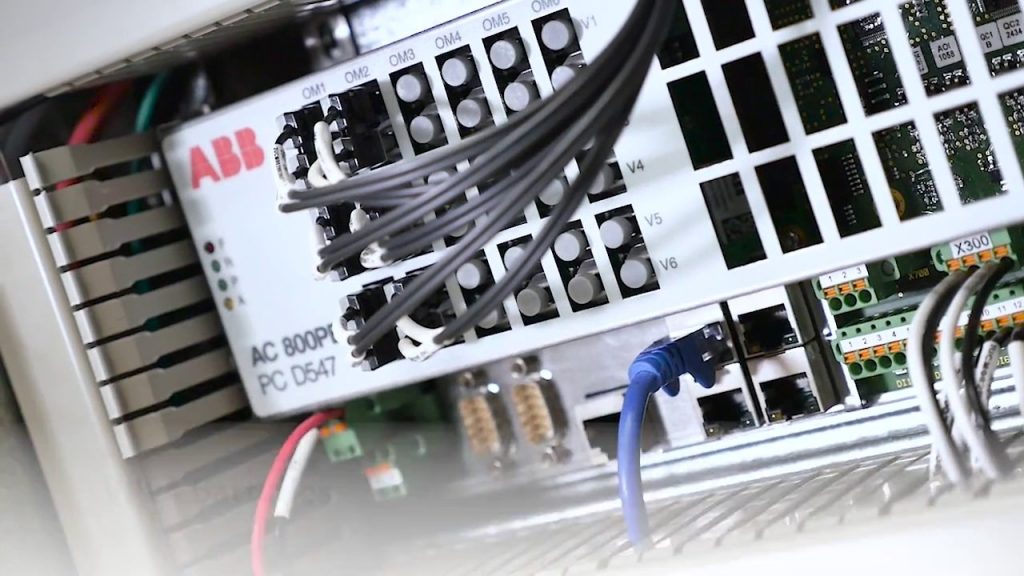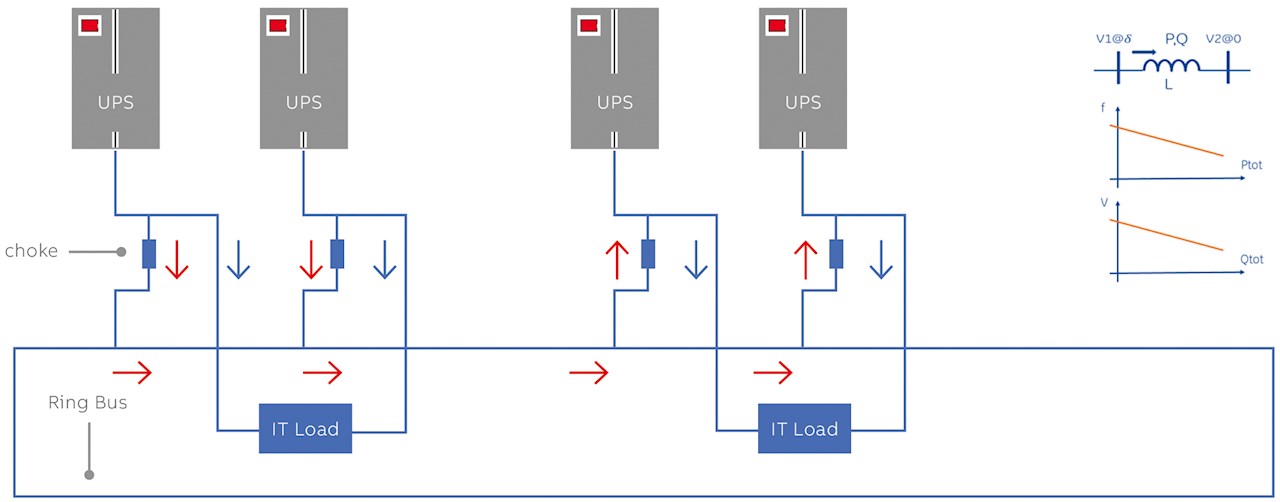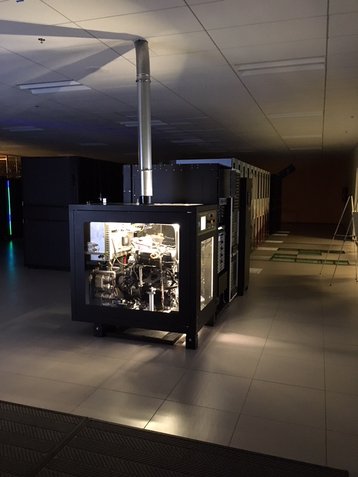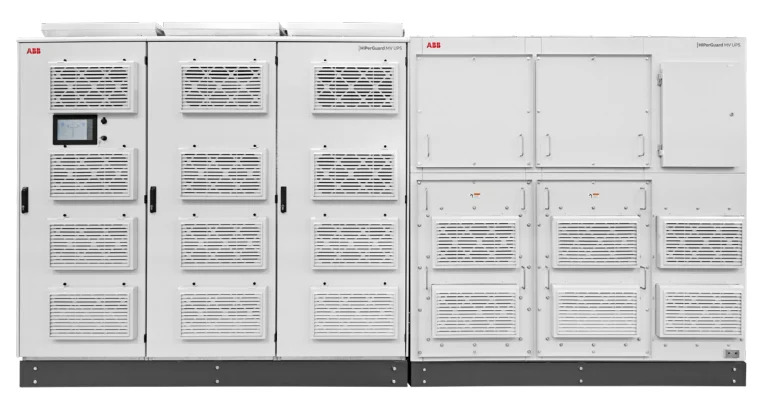What Is Medium-Voltage UPS?

Photo Credit: datacenterdynamics.com
Medium-voltage Uninterruptible power supply (UPS) and fuel cell technologies both protect and provide electricity to the data center while reducing energy and carbon emissions. The next generation of Medium-Voltage uninterruptible power supplies (UPS) are designed for multi-megawatt power production.
No matter what supply grid disturbances occur having UPS high-performance inverters ensure that the output voltage is regulated. The Medium-Voltage UPS offers filtered power that is constantly controlled.
Medium-Voltage UPS – Designed For Large Data Centers
Maximum Availability
The Medium-Voltage UPS has a high uptime. it’s medium-voltage design approach delivers high power levels from single blocks, a smaller switchgear count, and a modular design that allows for the loss of up to two converters without automatically switching to bypass mode. Additional internal redundancies for fans and switched-mode power sources boost system availability even more.
If the electrical designer incorporates a redundant module in the system for large parallel or ring-bus systems, module repair can be done while the system is up and the load is fully protected, enhancing system availability even more. The below diagram illustrates a typical ring bus architecture.

image source : ABB
High Performance
Medium-Voltage UPS provide a clean output voltage in compliance with IEC62040-3 class 1 and may also give high fault currents of up to five times nominal current for downstream protection and fault clearing.
Efficiency
The Medium-Voltage UPS boasts a class-leading efficiency of 9% for the load spectrum from 50% to maximum rated load, and higher than 96% for the load spectrum from 25% to 50%. Low no-load losses and a modular design enable a nearly flat efficiency curve, allowing maximum capacity to be deployed on day one while minimizing energy waste if initial loading is low.
Operating Cost-Effectiveness
Because the power protection is set to Medium-Voltage, facility construction and operation costs are lower because currents and electrical losses are lower, cables can be smaller. Furthermore, because Medium-Voltage requires less infrastructure, it has a higher level of reliability due to less potential points of failure.
Flexibility And Scalability In Large Power Applications
In addition to the hard-parallel and ring-bus configurations discussed above, the Medium-Voltage UPS’s flexibility allows it to suit numerous typical data center topologies, such as “distributed redundant,” “shared redundant,” or “catcher.” Utilizing groups of 22.5 Medium-Voltage configurations in hard-parallel mode opens up new possibilities for using existing designs – and at a substantially larger power level, as the architecture supports huge backup systems like diesel or gas generators.
Indoor and outdoor Medium-Voltage solutions, as well as flexible energy storage alternatives with autonomies ranging from a few seconds to several minutes, are all feasible.
Grid Support Functions
With the growth of renewable energy generation, UPS equipment can provide grid support functions in addition to load protection.
Large data centers have a significant stranded power generation capacity due to their redundant design and battery systems. This infrastructure can generate an income stream through grid support services such as demand management and frequency regulation, as well as increase engagement in corporate social responsibility by helping out local community power schemes.
The Medium-Voltage UPS is suitable for injecting real power into – or absorbing it from – the electrical network on request from an external power plant controller when network stability is threatened, in addition to its primary function as a load protection system. The Medium-Voltage UPS will step in to deliver power to the vital load at the site upon request, decreasing the grid’s burden and allowing it to recover. If the requested power relief would leave the essential load short, the UPS will support the full load and only inject any excess capacity into the grid – that is, the maximum available power to be injected into the grid is equal to the Medium-Voltage UPS system rating minus the required load power.
Advantage Of Medium-Voltage Level UPS System
![]()
Low-voltage UPS systems are typically used in data centers alongside servers and HVAC equipment. To achieve economies of scale, data center facilities are increasingly larger and require more electricity. Moving to medium voltage is a natural step for UPS systems as power requirements grow. Medium-voltage systems give additional benefits in addition to the two basic advantages of higher dependability and lower costs.
Medium-voltage equipment, which operates at 24 kV, is far more reliable than low-voltage systems. To meet its power requirements, a data center would require fewer units. These devices are easier to install, run, and maintain as discrete modules than several low-voltage systems strewn about the site. Because more equipment automatically means more risks, this minimizes downtime.
The medium-voltage technique also saves energy since it uses lower currents and so reduces electrical losses. The latest systems have up to 98% efficiency thanks to power conversion equipment that maintains power quality without the usage of batteries. The higher medium voltage efficiency can save up to 4.2 GWh when compared to a rotating UPS. For a large site, this savings translates to 1,245 tonnes of CO2 emissions over 15 years.
Using a scalable and modular MV UPS can provide additional benefits, such as the ability to deploy up to ten ABB HiPerGuard units of 2,250 kVA in simultaneously to manage 22.5 MVA power. For simplicity of maintenance, one system can be taken offline while the others remain operational in an N+1 arrangement.
Since the MV UPS operates at a medium-voltage level at the grid connection point, it’s flexible enough to support any data center loads. This flexibility ensures power continuity for servers to remain stable throughout the center by overcoming short outages and power quality concerns. In contrast, low-voltage UPS capacity can potentially become stranded when power can’t be reassigned elsewhere. This may require an additional capital outlay to ensure full coverage of backup power.
How Can Fuel Cells Play A Role?

Photo Credit: datacenterdynamics.com
Many of the world’s major data center companies are working to reduce or eliminate their reliance on diesel generators. Microsoft, for example, has vowed to phase out diesel consumption by 2030 and is testing fuel cells as an alternative. Google said in 2020 that at a new location in Belgium, it would employ massive batteries instead of diesel generators.
Fuel cells are appealing because of their ability to supply local backup power and even inject power into the grid during times of high demand. Because fuel cell technology blends materials and chemical science with automation, protection, and control systems, its use necessitates an expert understanding of each subject.
Fuel cells can be integrated into power systems, such as powering electric vehicle charging stations with 200kW installations when grid power is unavailable. Fuel cells also supply backup power in microgrids and power for telecom sites in other remote regions.
Why Are Data Centers Adopting Green Practices?
European operators are under pressure as a result of increased environmental legislation and record-high energy prices. Because energy is in short supply at a time when demand is high, energy-intensive organizations like data centers are eager to have more control over their energy consumption. This will enable them to comply with new legislation, maintain power reliability, and profit from energy markets.
Both power continuity and grid power can be provided by new UPS and fuel cell technologies. The data center can also incorporate renewable energy and potentially create revenue by engaging in demand and frequency response schemes.
Low-carbon technologies also help you establish a reputation as a responsible company.
AKCP Monitoring Solutions
Medium Voltage is also the market with the most failures, due to a variety of factors including a large and fragmented geographical footprint, a wide range of technologies, and third-party installation.
As a result, data center owners and operators are facing increasing concerns connected to power supply safety and continuity, which can only be addressed with the help of a comprehensive, robust, and current database.
AKCPro Server is a breakthrough technology that allows online, accurate and reliable measurements of key parameters, diagnosis, and defect localization from remote. It can help increase uptime and safety of electrical systems, enhance assets longevity and significantly reduce maintenance time, manpower, costs, and risks by harnessing the extraordinary possibilities of data gathering and the Internet of Things.
SPX+
Connect the Medium-Voltage UPS system, and add sensors like dry contact inputs, and a battery monitoring sensor. Ethernet connectivity is included as standard. Through the 4G network, the optional cellular modem allows for remote communication and warning.
Battery Monitoring Sensor
Monitoring of battery terminal temperature, current, and voltage. Ensure your battery is healthy and has sufficient voltage when needed.
Dry Contact Sensors
Dry contact sensors are user-definable and can be used to detect many different inputs such as UPS status, security systems, and air conditioning status.
Power Meters
1ph and 3ph power meters with current transformers. Checks power output, frequency, and voltage.
Reference Links:
https://www.azom.com/article.aspx?ArticleID=11957
https://www.energy.gov/sites/prod/files/2019/10/f68/fcto-h2-at-ports-workshop-2019-v1-vanska.pdf
https://www.energy.gov/sites/prod/files/2019/10/f68/fcto-h2-at-ports-workshop-2019-v1-vanska.pdf
https://www.microsoft.com/en-us/research/wp-content/uploads/2016/02/FCDC-TechReport.pdf





